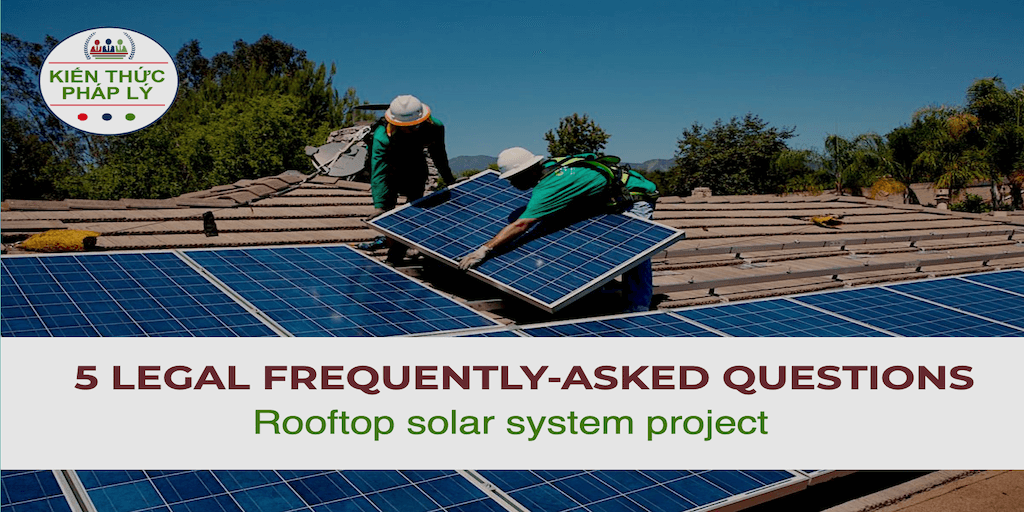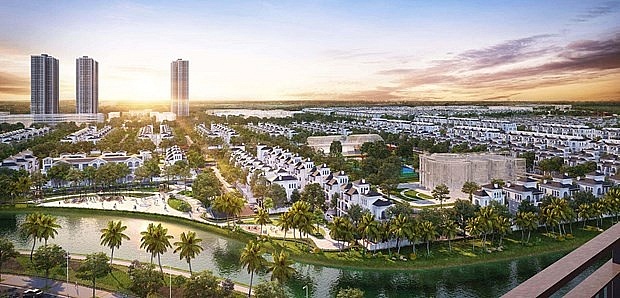See Vietnamese version of this article HERE.
1. Is a solar system of which panels are installed on the frames directly attached to the land beneath considered as a “rooftop solar system (RSS) project”?
No.
Article 3.5 of Decision 13/2020/QD-TTg (“Decision 13”) clearly provides that “The rooftop solar system is the solar system of which the photovoltaic panels are installed on the roof of the constructions […]”. Accordingly, the Ministry of Industry and Trade (MOIT) issued the Official letter No. 7088/BCT-DL dated 22 September 2020, demonstrating that “construction” must be those with a specific and separate function. Particularly, such constructions must be erected in accordance with the laws on construction, investment, environment, fire prevention, land. Concurrently, the function of the roof thereof must also be in line with the underlying constructions.
2. Is it mandatory/necessary to verify if the contemplated RSS project is in line with the solar power development plan of the concerned province?
Mandatory – Uncertain / Necessary – Absolutely yes.
Although Decision 13 leaves the question of whether an RSS project is subject to the verification for consistency with the solar power development plan entirely open (to note that Decision 11[1], superseded by Decision 13, explicitly provided that the solar power development plan is not applicable to RSS project). In respect of an RSS project, the most vital concern is the probability of executing the PPA with EVN. Nonetheless, Circular 18[2] once again fails to clarify if the process of consideration for PPA execution of EVN embraces the notion of “solar power development plan”. On the face of literature, Circular 18 only requires that “EVN gives its opinions in relation to the grid-connection and RSS transmission capabilities”[3]. As such, it is unclear if EVN plays any role in verifying/determining whether the contemplated RSS project fits into the solar power development power.
In practice, when igniting the RSS project, the investor is encouraged to obtain the Investment Registration Certificate (IRC), irrespective of whether such IRC is mandatorily required or otherwise in accordance with the Investment Law. The meaning of a successful obtainment of the IRC is twofold. On the one hand, it indirectly confirms the consistency of the RSS project with the solar power development plan (this is because during the course of considering and issuing the IRC, relevant Department of Planning and Investment (DPI) or Industrial Zone Authority very much likely seeks the supporting opinion from other Departments, including the Department of Industry and Trade (DOIT) – the responsible authority in relation to the provincial solar power development plan. On the other hand, the IRC can be used as a firm basis for the investor to enjoy the statutory tax incentives.
My practical experience further shows that several local authorities (i.e. Ba Ria – Vung Tau) even require the investor to firstly obtain the investment decision from the People’s Committee. This presents that the level of autonomy to develop an RSS project may no longer exist from the perspective of the investor.
3. What are the key legal concerns when leasing the roof of the factory/construction to install the RSS?
It is imperative that the lessor sufficiently obtain the vital legal documents in respect of such construction/factory, the significance of which, among others, are (i) Certificate of land use right, ownership of house and other assets attached to land (“LURC”) recording the legitimate ownership of the lessor over the factory on which roof is to be used for the installation of RSS[4] and (2) Fire prevention certificate applicable to such factory.
4. Is the RSS required a separate fire prevention certificate other than that issued to the factory/construction?
Yes in some cases and No in others.
To clarify, under Official letter No. 3288/CP07-P4 of the Ministry of Public Security dated 8 September 2020, the fire design inspection with respect to the RSS project shall be boiled down to either scenario as below:
(1) Scenario 1: Fire design inspection required for the RSS being installed on the construction which the latter falls under any classification set forth in Appendix IV of Decree 79/2014/ND-CP (since Decree 79 has been replaced by Decree 136/2020/ND-CP, it may be interpreted that the reference to Appendix IV of the former shall be the reference to Appendix V of the latter).
(2) Scenario 2: No fire design inspection required in any cases other than those specified in Scenario 1.
5. 1MW và 1.25MWp – Which one to be used as the basis for determining the RSS project?
1.25MWp.
The prevailing legislations are at odds with one and another regarding the capacity used to determine the RSS project (Decision 13 solely employs 1 MW while Circular 18 refers to both 1 MW and 1.25 MWp). In the most basic sense, MWp (MW-peak) may be construed as the nominal capacity of an RSS (aggregate of nominal capacity of each photovoltaic panel). In other words, MWp is a “theoretical” capacity which the RSS may generate whilst MW leans to the actual capacity.
When installing the panels, MWp is the capacity declared by the manufacture. In most cases, actual capacity is (merely) always lower than the nominal capacity. Since only the nominal capacity is available at the moment of installation, 1.25 MWp is threshold to be used for determining whether a project is deemed as an “RSS project”.
[1] Decision No. 11/2017/TT-CP dated 11 Apr 2017 (“Decision 11”), art. 4.3.
[2] Circular No. 18/2020/TT-BCT dated 17 Jul 2020 (“Circular 18”)
[3] Circular 18, art. 5.2(b).
[4] Some argue that the construction permit in relation to the construction/factory should be set as a condition precedent. However, the author opines that the legal risks are minimised so long as the LURC fully records the ownership towards the factory/building. Put differently, a construction once recorded under the LURC is deemed legally erected in accordance with the laws on construction.
- CHUẨN MỰC “CẨN TRỌNG” TRONG QUẢN TRỊ DOANH NGHIỆP: NHẬN DIỆN, ĐÁNH GIÁ VÀ GIẢI PHÁP THỰC TIỄN - Tháng 8 16, 2025
- TUÂN THỦ PHÁP LUẬT LAO ĐỘNG CHO DOANH NGHIỆP – CÁC LOẠI BÁO CÁO ĐỊNH KỲ (PHẦN 1) - Tháng 4 9, 2025
- LỰA CHỌN CƠ QUAN GIẢI QUYẾT TRANH CHẤP TRONG GIAO DỊCH MUA BÁN CÔNG TY CÓ LIÊN QUAN ĐẾN BẤT ĐỘNG SẢN - Tháng 1 12, 2025







